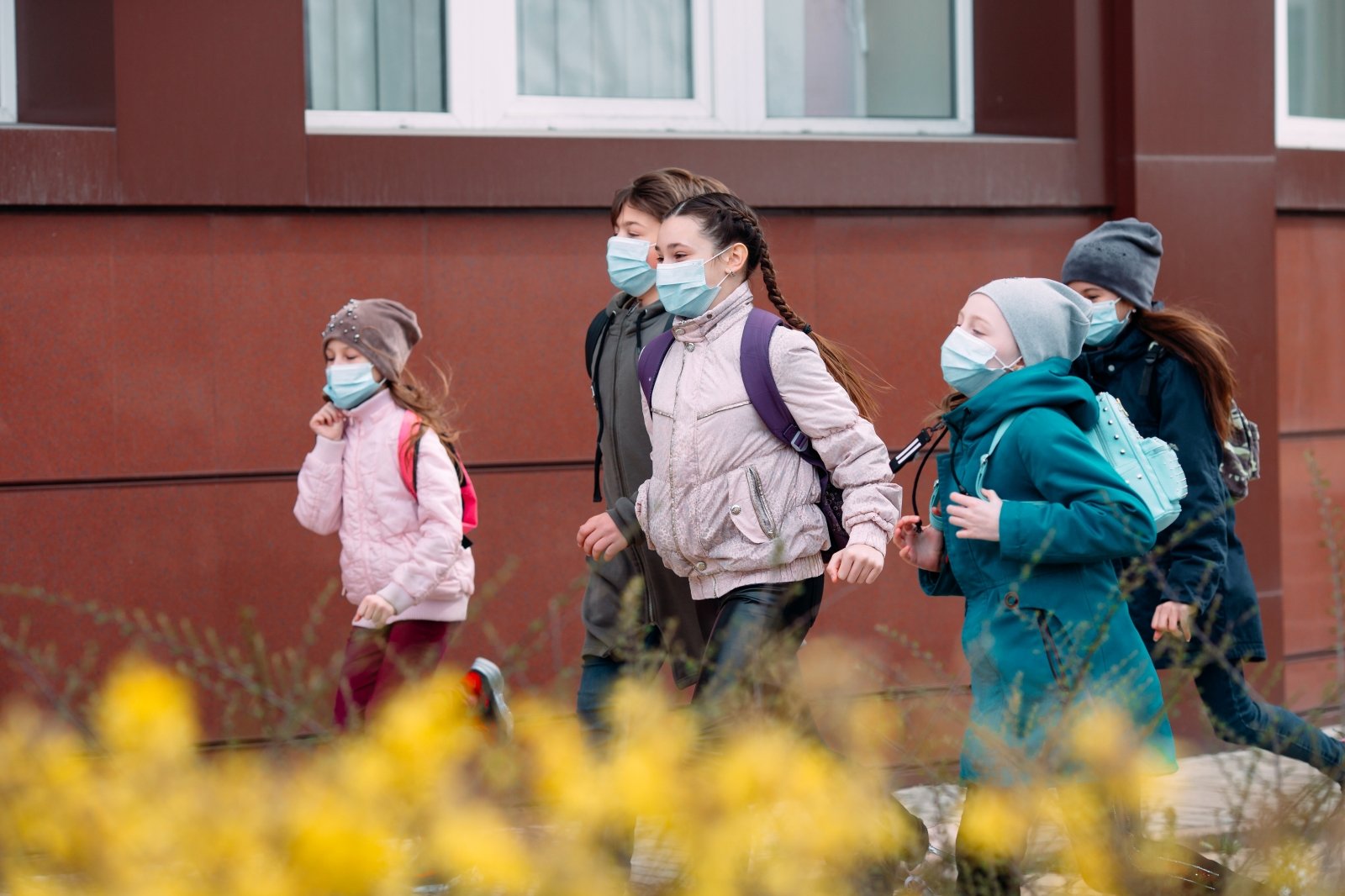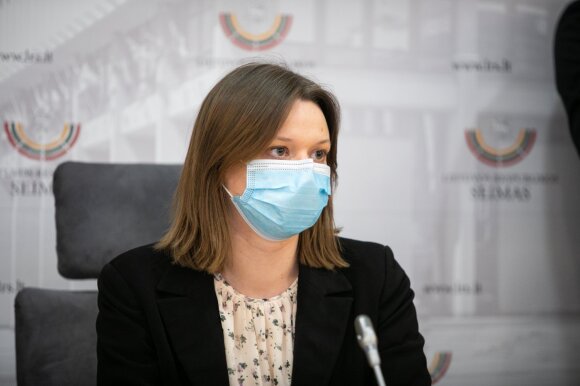
[ad_1]
According to Ginreta Megelinskienė, epidemiologists are currently asking a lot of questions about what to do if a coronavirus is detected in an educational institution.
According to G. Megelinskienė, when a person is infected with SARS-CoV-2, the average time from infection to the onset of symptoms is 5 to 6 days. The infectious period begins 2-3 days before the onset of symptoms.
“These are the first days that the virus enters the body, but the person still does not infect others. Therefore, it is very important to realize that there is a period of time when it is relatively safe. But different researchers point to a different time period, “said the epidemiologist.
According to her, if the symptoms appear on average after 5-6 days, and the contagious period begins 2-3 days before the onset of symptoms, it means that, on average, 2-3 days after contact, the person cannot infect others. However, in people with various diseases, the virus can be released earlier.
According to G. Megelinskienė, one of the most important aspects for educational institutions is to communicate properly and in a timely manner, because after doing so, unfounded rumors can quickly spread.
It is also very important to appoint a responsible person in the educational institution. “Those people should be responsible for managing COVID-19, monitoring the general situation, and perhaps monitoring the number of children who do not attend school, the reasons and know how to handle the situation if the coronavirus infection is detected,” explained the specialist.

Ginreta Megelinskienė
According to the epidemiologist, the educational institution must prepare a plan to be used when detecting an infection.
G. Megelinskienė also presented the NVSC action plan for schools.
“NVSC receives information about a confirmed case of COVID-19 from laboratories, personal health care institutions, now often from the administration of the educational institutions themselves, the parents. But it is important that that information is verified. <...> Because there have been cases where a large number of people are isolated and then it turns out that someone did not understand something and the person did not get sick, ”said G. Megelinskienė.
This information is followed by a case survey that explains where the person visited. The exposed persons are isolated, the educational institution is contacted, cleaning and disinfection is ordered, the entire situation is discussed together with the educational institution.
“Epidemiologists’ recommendations should be listened to when and what to test. We have repeatedly mentioned that the test should be done at least 6 days after contact. However, another strategy can be chosen: isolate people and tell them to monitor their welfare and that they do not go to investigate, “said the epidemiologist.
What should I do if a coronavirus is detected in an educational institution?
“The first answer is to be calm. The employee or student should stay at home, isolate themselves, communicate with their family doctor and listen to their recommendations. The responsible person in the educational institution should be informed by phone. The exposure should be well informed in order to isolate. It is necessary to make lists of people with whom they have been in contact and places they have visited, “advised the epidemiologist.
You should also think about when the symptoms appeared. The list should include the names and phone numbers of the people exposed.
According to G. Megelinskienė, it is worth reviewing the routes of infected people presented on the NVSC page, because sometimes it helps people to remember where the infection may have taken place.
“If the NVSC specialists do not contact us within 24 hours, we should inform ourselves of this via a general telephone number. If the contact persons are not contacted, the form must be completed on the NVSC page” said the NVSC representative.
High-risk people are isolated for 14 days after exposure, even if the test response is negative.
High risk exposure: when a person has been in contact with an infected person for less than 2 meters, for more than 15 minutes, or has had direct physical contact with their body fluids.
A person with low risk exposure is one who has communicated at a distance of 2 meters and for less than 15 minutes. These people are not isolated.
The isolation period can only be shortened for those who came from the affected countries, but not for those who had a high-risk exposure.
What to do if one of the children in the family had contact and has siblings who attend the same educational institution?
“The contact persons of exposed persons do not represent a risk. In this case, the child who has had direct contact must isolate himself and his brothers and sisters can go to the educational institution. If the exposed child was diagnosed with coronavirus and had interacted with relatives, he would have to isolate himself, ”said G. Megelinskienė.
However, the epidemiologist emphasized that siblings can only go to school if the exposed relative is properly isolated.
What should be done if an employee or student of an educational institution had a high-risk contact with a person with COVID-19?
According to the epidemiologist, the exposed person should stay at home or in an isolation area, notify the school by phone, and wait for NVSC specialists to call. If you don’t receive it within 24 hours, you must fill out the form on the NVSC page yourself. It is also necessary to measure the temperature daily, monitor well-being. If symptoms occur, call 1808.
The educational institution will not isolate people who have been in contact with this person, but will give the isolated person the opportunity to study at home. The educational process must continue and inform the school community that this person is not at risk.
According to the epidemiologist, an isolated person in a home with other people should be in a separate room with a separate bathroom. If this is not possible, it is necessary to restrict movement in the house, ventilate the premises well.
If a student or staff member has a fever or other symptoms of a contagious disease, the responsible person should be reported first. You should take the person to an isolation room and wait with the student for their parents to arrive if necessary. If the child can be alone, she can be left behind. After isolating a student, the parents must be informed.
Follow up with your family doctor. According to G. Megelinskienė, when a student is taken from a place of isolation in a school, that place must be disinfected, information has been collected from those who are in the school to see if they have any symptoms.
If symptoms occur, the worker should wear a medical mask and go to an isolation area immediately.
It is strictly prohibited to use the information published by DELFI on other websites, in the media or elsewhere, or to distribute our material in any form without consent, and if consent has been obtained, it is necessary to cite DELFI as the source.
[ad_2]